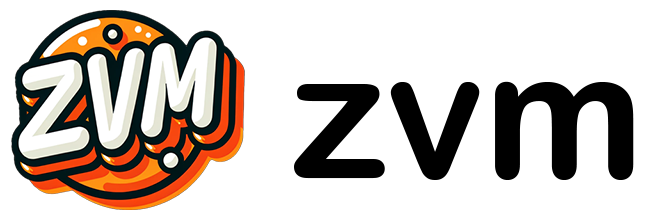Installing ZVM
ZVM lives entirely in $HOME/.zvm on all platforms it supports. Inside of the
directory, ZVM will download new ZIG versions and symlink whichever version you
specify with zvm use to $HOME/.zvm/bin. You should add this folder to your
path. After ZVM 0.2.3, ZVMs installer will now add ZVM to $HOME/.zvm/self. You
should also add this directory as the environment variable ZVM_INSTALL. The
installer should handle this for you automatically if you’re on *nix systems,
but you’ll have to manually do this on Windows. You can then add
ZVM_INSTALL to your path.
If you don’t want to use ZVM_INSTALL (like you already have ZVM in a place you
like), then ZVM will update the exact
executable you’ve called upgrade from.
Linux, BSD, MacOS, *nix
curl https://raw.githubusercontent.com/tristanisham/zvm/master/install.sh | bashWindows
PowerShell
irm https://raw.githubusercontent.com/tristanisham/zvm/master/install.ps1 | iexCommand Prompt
powershell -c "irm https://raw.githubusercontent.com/tristanisham/zvm/master/install.ps1 | iex"If You Have a Valid Version of Go Installed
go install -ldflags "-s -w" github.com/tristanisham/zvm@latestManually
Please grab the latest release.
Putting ZVM on your Path
ZVM requires a few directories to be on your $PATH. If you don’t know how to
update your environment variables permanently on Windows, you can follow
this guide. Once you’re in
the appropriate menu, add or append to the following environment variables:
Add
- ZVM_INSTALL: C:\Users\
%YOUR_USERNAME_HERE%\.zvm\bin\self
Append
- PATH: C:\Users\
%YOUR_USERNAME_HERE%\.zvm\bin - PATH: $ZVM_INSTALL/
Community Package
AUR
ZVM on the Arch AUR is a community-maintained package, and may be out of date.

